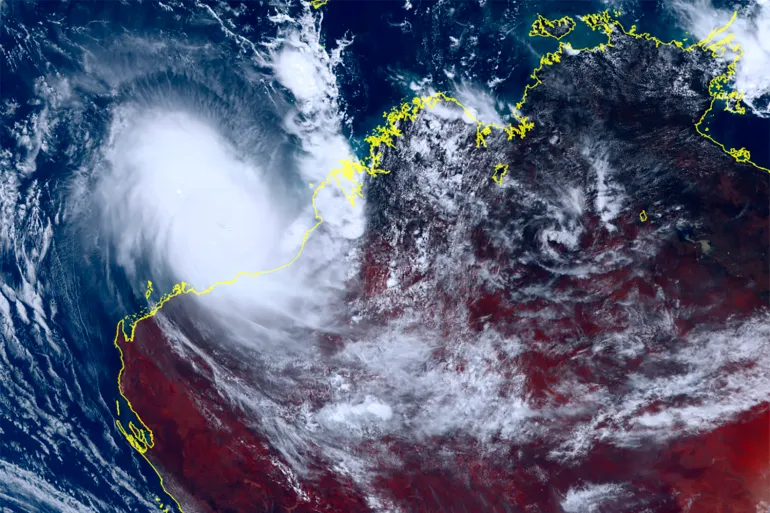Australia’s northwest is being battered by strong winds and torrential rain as Cyclone Ilsa approaches the sparsely populated but resource-rich area.
According to the Bureau of Meteorology, the storm, which is expected to be the strongest to hit the northwest in almost ten years, could produce “very destructive” gusts of up to 275kmph (170mph).
Remote locations have received deliveries of food and gasoline, and people have been urged to stock up on necessities like water.
For a number of rural communities, a yellow alert warning residents to prepare for a storm has been issued.
The alarm was for Port Hedland, a significant iron ore shipping centre where most of the 15,000 people work for mining firms. The town may be reached from Perth, the capital of Western Australia, by car in around 17 hours.
Peter Carter, the mayor of Port Hedland, warned that the devastating winds might turn flying debris into “missiles in the air.”
According to him, that is what damages everything and causes people’s injuries, according to the Australian Broadcasting Corporation (ABC). Everyone is nervous. They are aware of the nature of cyclones. They are incredibly unpredictable.
The fire brigade reported that approximately 700 people of the isolated town of Bidyadanga were being evacuated.
According to the weather service’s most recent estimate, Ilsa is predicted to make landfall late on Thursday or early on Friday and could disrupt a 600 km (373 miles) wide area of land from from the east of Port Hedland to just south of the popular tourist destination Broome.
According to the Bureau of Meteorology, Port Hedland, which is utilised by iron ore miners like BHP Group and Fortescue, may avoid the worst of the storm.
A representative for Fortescue said the company has stopped shipping and non-essential travel to the port, but that it did not anticipate “any significant impact to operations at this stage.”
With winds up to 170 km/h (106 mph), Cyclone Seroja struck Western Australia’s west coast in April 2021, causing damage to homes as well as falling trees and power lines.They are very strong, with the capacity to lift up loose goods in the yard, such as caravans and trailers, in addition to destroying trees and bringing down power lines, according to meteorologist Miriam Bradbury, who spoke to the ABC.
